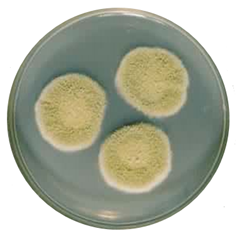 The third of Galen’s four fluid humours of the body, χολή, [yellow] bile, was associated, when in supposed excess, with a choleric temperament, “disposed to anger or easily angered; hot-tempered, fiery; bad-tempered, irascible; irritable, cantankerous” (OED).
The third of Galen’s four fluid humours of the body, χολή, [yellow] bile, was associated, when in supposed excess, with a choleric temperament, “disposed to anger or easily angered; hot-tempered, fiery; bad-tempered, irascible; irritable, cantankerous” (OED).
This couldn’t be more different from the phlegmatic temperament, “not easily excited to feeling or action; stolidly calm, self-possessed, imperturbable; sluggish, apathetic, lacking enthusiasm”. Yet each word comes from an IndoEuropean root associated with shining, phlegmatic from BHEL, which I have previously discussed, choleric from GHOL, the o-grade form of GHEL.
Shining words that derive from GH’L, the zero grade form, include glad, glance, glare, glass, glaze, glazier, gleam, glee, glimmer, glimpse, glint, glisten and glister, glitter, glitz, gloaming, gloss, glow, and glower. Gleet is a shiny penile discharge suggestive of gonorrhoea. Shiny things are slippery, giving glacier, glib, glide, and glissando. Shiny things are also smooth (Latin glaber), like the glabella, the space between the eyebrows.

In Greek γλαυκός meant gleaming and bluish-green or grey, giving glaucous and glaucoma (γλαυκόμματος = grey-eyed). Other shining colours include gold, through Teutonic derivatives such as the German gelb, and yellow, like a yolk. Shifting l to r gives you green. Shifting g to h gives you the Sanskrit hari, a yellow colour; Hare Krishna is the god whose energy is like that of the yellow sun (Greek ἥλιος). In Latin, helvus was a dull kind of yellow; holera, the plural of holus, and the diminutive holuscula were vegetables, particularly green ones. Shifting g to f gives you the Latin fulvus, a tawny or sandy colour. The antifungal drug griseofulvin is derived from Penicillium griseofulvum, which forms grey–yellow colonies (picture); it was first isolated and named by Oxford, Raistrick, and Simonart in 1938.
In Greek, GHOL also gives χλωρός, yellow or light green, after which the gas chlorine is named, as are the green plant pigment chlorophyll and drugs that contain chlorine (chloral, chlorambucil, chloramphenicol, chlordiazepoxide, chloroform, chloroquine, chlorothiazide, chlortetracycline). In chloasma, which typically occurs during pregnancy, the skin is marked by yellowish-brown or black patches. Chlorosis was a disorder that was thought to be limited to young women soon after puberty and was characterised by a greenish pallor, weakness, amenorrhoea or irregular menstruation, and appetite disorders, similar in some ways to anorexia nervosa. It disappeared as a diagnosis at the start of the 20th century.
To gild is to cover with gold. Some coins, originally gold, have related names, including the Dutch guilder and (shifting g to z) the Polish zloty. More generally, geld is German for money. The old Persian word zarna also meant gold, and the related Syriac word zarnika, from which we get the name arsenic, meant orpiment, a yellow mineral, arsenic trisulphide, used as a pigment.
GHOL also leads to words associated with bile—gall and words such as cholagogue, cholecalciferol, cholecystokinin, choledochal, cholelithiasis, cholestasis, and cholesterol.
Cholera (Greek χολέρα) was originally a disease characterised by vomiting and diarrhoea, supposedly discharging the body’s humours, but perhaps by confusion with χολάδες, the bowels; ξηρὴ χολέρα, dry cholera, was a form of constipation. The term first appeared in English in the middle of the 14th century as the noun choleric, meaning someone with a predominance of bile and later an irascible person. Choler and cholera, meaning humoral bile, appeared in the late 14th century, as did the adjective choleric. In The Canterbury Tales, Chaucer described the Reeve as “a sclendre coleryk man”. Cholera as a diarrhoeal disease first appeared in English in the late 16th century, but it described a summer disease with severe diarrhoea, vomiting, and abdominal cramps, sometimes called bilious, British, English, European, or summer cholera. The disease caused by Vibrio cholera did not earn the name cholera until the 19th century, following pandemics in India and elsewhere. Enough to make you choleric.
Jeffrey Aronson is a clinical pharmacologist, working in the Centre for Evidence Based Medicine in Oxford’s Nuffield Department of Primary Care Health Sciences. He is also president emeritus of the British Pharmacological Society.
Competing interests: None declared.
